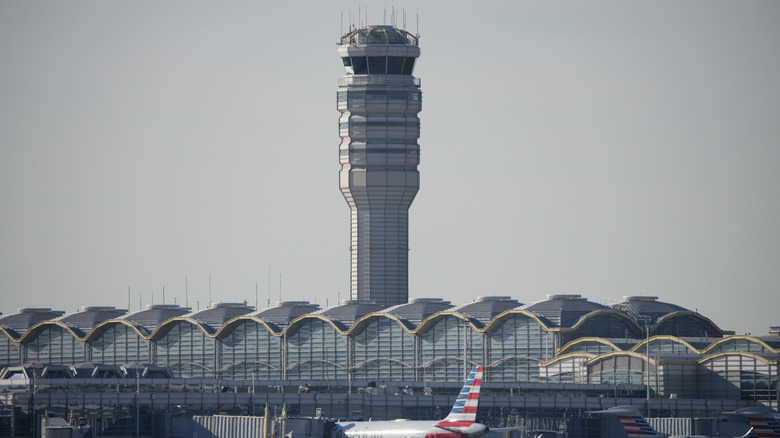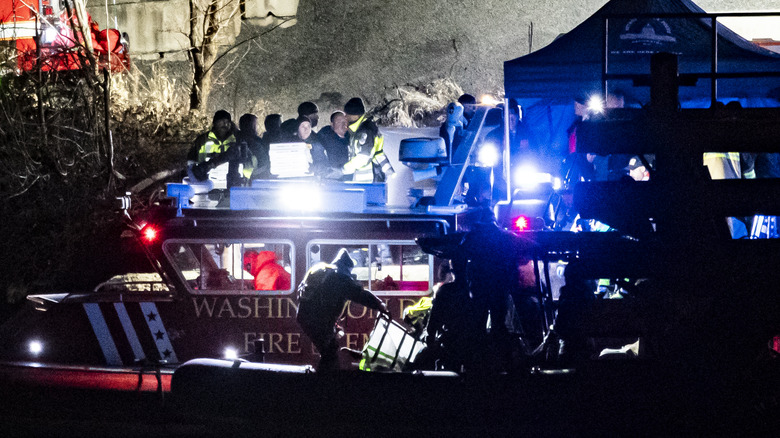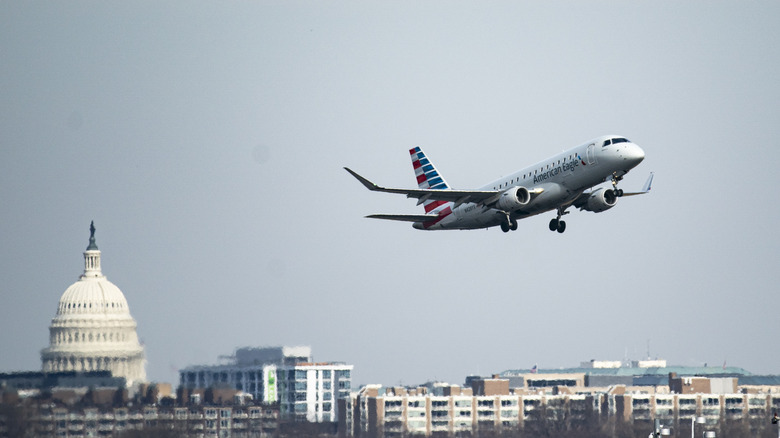What Aviation Experts Really Think Caused The 2025 DC Plane Crash
The disastrous 2025 collision of American Airlines flight 5342 and a UH-60 Blackhawk helicopter near Ronald Reagan Washington National Airport (DCA) in Washington, D.C. has left many, many pertinent questions that need answering. Even as people mourn, media outlets, politicians, laypeople, and experts alike have turned their attention to the details of the plane crash that left no survivors. As of this writing, they're still trying to figure out what happened, why it happened, and what we can do to prevent such a disaster from happening in the future.
The tale of the crash contains clues about what went likely wrong — the types of clues that aviation experts say contributed to the disaster. The collision happened at night, for instance — Wednesday, January 29, 2025 at about 8:47 p.m. — which is always more risky than landing in the day due to greatly decreased visibility. We say "landing" because Flight 5342 had nearly finished descending to Runway 33 at DCA and was therefore much lower than cruising altitude. At that height, the aircraft hit the Blackhawk in question, but only because the Blackhawk appeared to have trouble navigating and, for some reason, rose above the regulated elevation of 200 feet. Air traffic control at DCA tried to warn the helicopter and steer it away, but the helicopter's pilot didn't follow-through, for whatever reason.
Taking all these points into account, we could summarize the experts in a very simple way: human error. The tragedy of American Airlines Flight 5342 is likely one of those preventable tragedies made tragic precisely because it was preventable. It seems to have happened because of a perfect storm of tiny mistakes that all came together.
Poor visibility and related communication problems
Almost every aviation expert mentions one key, contributing factor to the collision of American Airlines flight 5342: poor night visibility. Speaking to Sky News Australia, pilot Byron Bailey describes how difficult it is to land a plane at night in general. Flight 5342 had reached the final part of its descent to Ronald Reagan Washington National Airport (DCA), landing gear out, when the crash happened. The pilot's focus would have been dead ahead on the runway, trusting that everyone else had done their job to clear the way.
Speaking with NBC News, former National Transportation Safety Board (NTSB) investigator Greg Feith echoed sentiment, saying that, to the helicopter, the plane would have been nearly invisible except for little green lights on the wingtips and a red strobing light on the bottom. On the BBC, former National Guard pilot Darrell Feller said the same. He's flown the exact same route as the Blackhawk did before the crash and said that the lights of Washington, D.C. make it all but impossible to see. This could account for why the helicopter rose up to nearly 400 feet, a choice that former Blackhawk pilot Elizabeth McCormick nonetheless told CNN was a "pilot error." Night vision goggles or not, though, she said the Blackhawk crew would have had trouble seeing.
So when air traffic control at DCA contacted the Blackhawk and said, "PAT 2-5 [the helicopter] pass behind the CRJ [commercial jet]," per CNN, the Blackhawk needed to react immediately. But there was a delay and perhaps some confusion about where to move, no matter how maneuverable the helicopter. Less than 13 seconds later, the two aircraft collided.
Staffing problems at air traffic control and in the helicopter
While experts say that poor visibility and its related communication problems played a huge role in the collision of American Airlines flight 5342 and Blackhawk helicopter, that's not the end of the story. They also say the jobs of the aircraft's pilots and support staff were made more difficult due to staffing shortage — on both sides. ABC 7 Chicago explains that the number of air force control staff across the United States has decreased 9% from 2011 to 2023 even as the number of flights increased across that period, per National Air Traffic Controllers Association union data. On top of this, the website of Virginia Senator Tim Kaine reported in February 2024 that the Senate Commerce Committee chose to shift more flights to Ronald Reagan Washington National Airport (DCA) despite its runway being "already the busiest in the country." And then, former NTSB investigator Greg Feith told NBC News that on the night of the collision, there was only one air traffic controller — one — on duty instead of the usual two.
Former Blackhawk pilot Elizabeth McCormick expertly explained similar staffing problems in the Blackhawk. The reader should note that the Blackhawk contained three individuals, all of whom died along with the 60 passengers and four crew of Flight 5342. On CNN, McCormick said that a three-person crew for a Blackhawk is standard, in general, but in crowded airspace above a city and near an airport, the Blackhawk really needs four people. This includes two pilots — one to look out either side — and two more personnel in the back.
For further reading, here are the most haunting final airplane crash messages.


